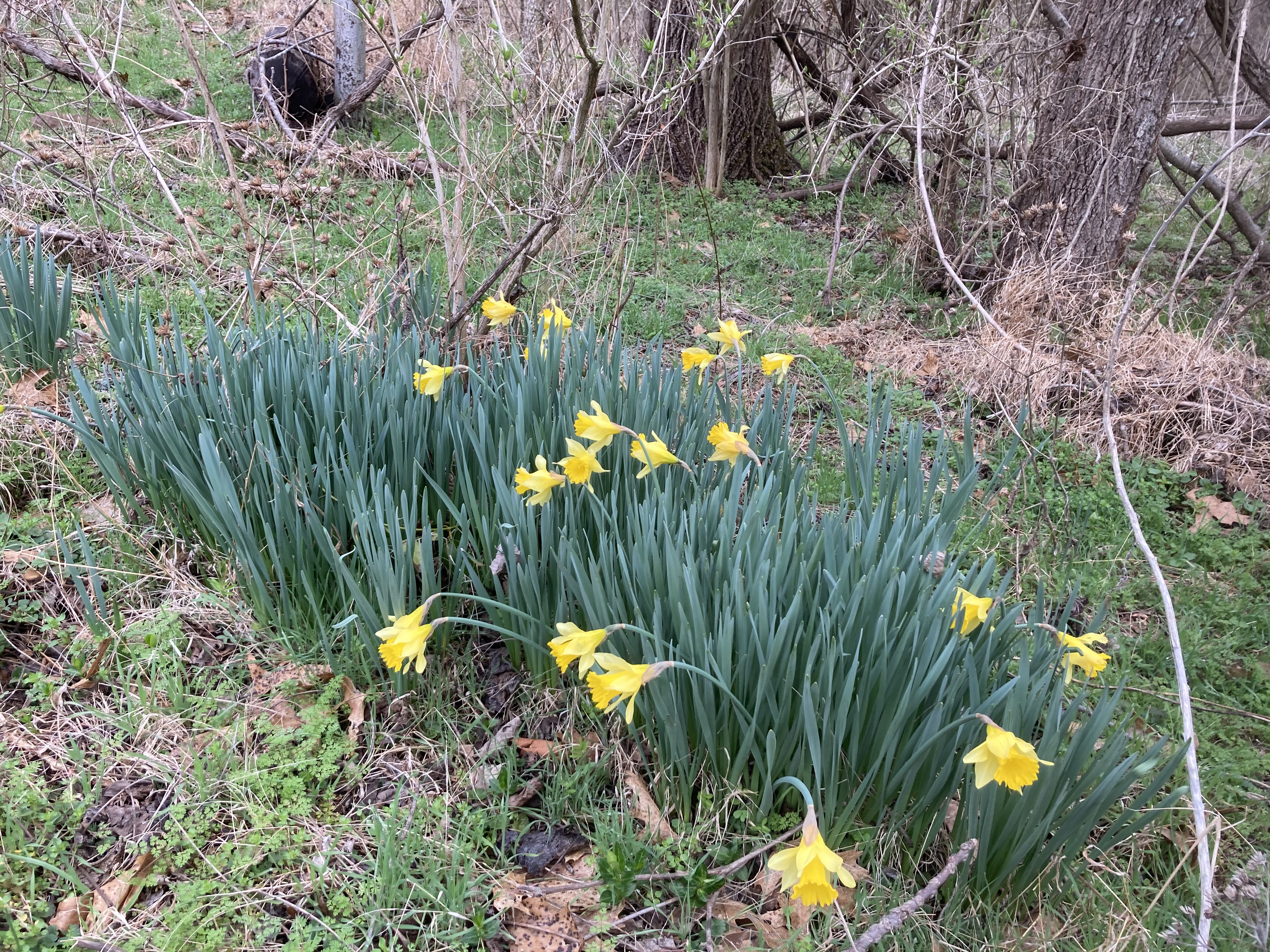Resource Library
Plant of the Week: Daffodils: ‘Remember Me’
During the first week of March, I drove from Fayetteville to Dardanelle via the back roads. Spring was beginning with one of the most common plants in bloom being clumps of yellow daffodils. While they presented themselves in front yards everywhere I looked, they also showed up in woody forests and in the middle of cow pastures. They seemed to shout out, “Remember me, I was here!”
The daffodil in question is a semiwild form of Narcissus pseudonarcissus, the ubiquitous yellow trumpet daffodil with a single, long-tubed trumpet surrounded by six tepals held at right angles behind the showy trumpet. Identity to the cultivar level is questionable, but many of these scattered plantings resemble the 1885 heirloom cultivar called “Golden Spur.” I have also found double flowered forms closely resembling the 1777 “Butter and Eggs” and examples of the poet’s narcissus around these old homesteads.
Gardeners then as now enjoyed diversity and likely shared bulbs amongst friends and family, so daffodils – or jonquils or Easter lilies as early Arkansans often called them – must have been one of their favorite pass-along plants. Having had the opportunity to plant several hundred daffodil clones over my career, I have noticed that not all clones have staying power. Many will begin declining after five years, others will persist for a decade or more then slowly fade away. But some persist indefinitely, blooming year after year.
Many of the surviving clumps found today are undoubtedly seedlings, perhaps several generations removed from the bulbs the housewife who labored on this now-vacant spot planted so long ago. But still they persist as vegetative markers for the hopes and dreams of the families who once toiled to wrest a living from this spot.
White European settlers have been claiming and settling land in Arkansas since the 1820s. At first the ownership claims were a bit sketchy. The federal government held title to the land after the Louisiana Purchase of 1803 and attempted to shift ownership to citizens of the region. Several early attempts to transfer land ownership involved federal programs that benefited the well-connected and politically astute, including land transfers following the New Madrid earthquake of 1811-12, the short-live Cherokee treaty lands of 1828 and the Swamp Land Act of 1850. In 1840, more than half of the land being farmed in the state was occupied by squatters who had no clear title to the land.
In the 1840’s the typical Arkansas farm consisted of about 100 acres and occupied higher ground, often on a wooded hillside. About 30 acres was cleared with corn (10 acres), cotton (five acres), grains (10-15 acres), and then tobacco, potatoes and other vegetables occupying the rest. Cattle and hogs ran wild in the woodlands. These small subsistence farms persisted into the 1920s, but larger cotton-based farms of the delta region began appearing in the 1850s and eventually dominated Arkansas agriculture.
After the Civil War, about 27 percent of Arkansas land was still owned by the federal government. The Southern Homestead Act of 1867 attempted to transfer ownership (80 acres, instead of the 160 acres provided by the Homestead act of 1862) to freedmen, and later, all takers. There was modest success in transferring land but less than half of the new homesteaders were able to establish clear title by meeting all of the requirements of the act. During Reconstruction, more than 800,000 acres of timberland were purchased by out-of-state speculators. Once the timber was removed, company salesmen attempted to sell the now-barren land to small farmers.
Railroads, with their “land for tracks” deals, began promoting land in the Ozarks region for apple production. Like so many aspects of Arkansas agriculture this model flourished until the collapse caused by coddling moth, droughts and the financial breakdown of the 1920s and ‘30s.
Everywhere these farmsteads were established, hopeful farm wives planted daffodils. But economies of scale, lack of capitalization, low yields and farm prices, and bad luck took their toll and Arkansas saw a population loss of 1.2 million people between 1920 and 1970. But in spring, the hopeful season, daffodils still shout out “Remember me!”
For more information about horticulture or to see other Plant of the Week columns, visit Extension’s Website, www.uaex.uada.edu, or contact your county extension agent. The Cooperative Extension Service is part of the U of A Division of Agriculture.
